 |
 |
 |
| |
The effect of intrinsic and extrinsic factors on the pharmacokinetics of TMC278 in antiretroviral (ARV)-naive HIV-1-infected patients
|
| |
| |
Reported by Jules Levin
9th International Workshop on Clinical Pharmacology of HIV Therapy
7-9 April 2008
New Orleans
R. van Heeswijk1, H. Crauwels1, S. Vanveggel1, M. Stevens1, M. Hereygers1, K. Boven2, R. Hoetelmans1
1Tibotec BVBA , Mechelen, Belgium; 2Tibotec Inc., Yardley, PA, USA
ABSTRACT
Background: TMC278 is a next-generation investigational NNRTI that shows potent and sustained activity in antiretroviral-naive HIV-1-infected patients [CROI 2007]. The current analysis examined the pharmacokinetics (PK) of TMC278 in the Phase IIb dose-finding study TMC278-C204 and explored the influence of covariates on the exposure to TMC278.
Material & Methods: Patients were randomized to TMC278 25, 75 or 150mg qd in combination with either AZT/3TC or TDF/FTC. Individual TMC278 AUC24h values were estimated from sparse PK samples (8 samples/48 weeks/patient) by empirical Bayes' estimation using a previously developed population PK model. The PK model comprised a 2-compartmental disposition model in which absorption was described by a lag time followed by sequential zero- and first-order absorption processes.
Results: The average (SD) TMC278 AUC24h in the 25mg (n=89), 75mg (n=93) and 150mg (n=86) group was 2,772 (1,179), 5,857 (2,386) and 10,252 (4,106) ng*h/mL, respectively. A less than dose-proportional increase in exposure was observed between the 25mg and higher doses, which may be related to solubility limited absorption. Hepatitis B or C co-infection (2.7% of the patients) and age did not appear to influence the PK of TMC278. A negative correlation between bodyweight and AUC24h was observed, which largely explained observed differences in exposure by gender (higher in women), race (higher in Asian patients), region (higher in Asia and Africa), and NRTI backbone (higher in patients using AZT/3TC, many of whom were patients from Asia). A multivariable analysis of the apparent oral clearance after adjustment for bodyweight (Cl/F/Kg) was performed, with dose, sex, race, region and NRTI-backbone as factors. Besides the dose, only race had a statistically significant effect on Cl/F/Kg, suggesting that race-related characteristics (other than bodyweight) may influence the PK of TMC278, in addition to the dose.
Conclusion: Bodyweight largely explained the differences in exposure by gender, region and NRTI backbone. Factors other than bodyweight may have contributed to the relatively higher exposure to TMC278 in Asian individuals. The influence of covariates on the PK of TMC278 at a dose of 25mg qd will be further investigated in Phase III.
INTRODUCTION
_TMC278 is an investigational NNRTI
TMC278 has a half-life of 45 hours in humans, allowing for once-daily dosing
TMC278 is a substrate and mild inducer of CYP3A4
48-week results from a Phase IIb dose-finding trial have demonstrated the efficacy, safety and tolerability of TMC278 in ARV-naive, HIV-1-infected patients1
77-81% of ARV-naive patients achieved a viral load <50 copies/mL at Week 48 in the TMC278 groups (25mg, 75mg and 150mg qd)1
AUTHOR CONCLUSIONS
Exposure to TMC278 increased less than proportionally to the dose
Bodyweight largely explained differences in exposure by
--gender
--region
--NRTI backbone
Besides bodyweight, other factors may have contributed to the relatively higher exposure in Asian patients
The influence of covariates on pharmacokinetics of TMC278 will be further investigated in Phase III
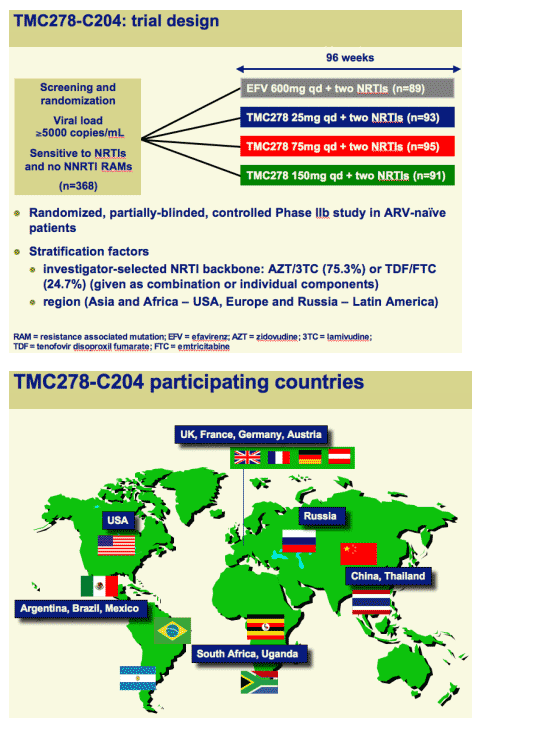
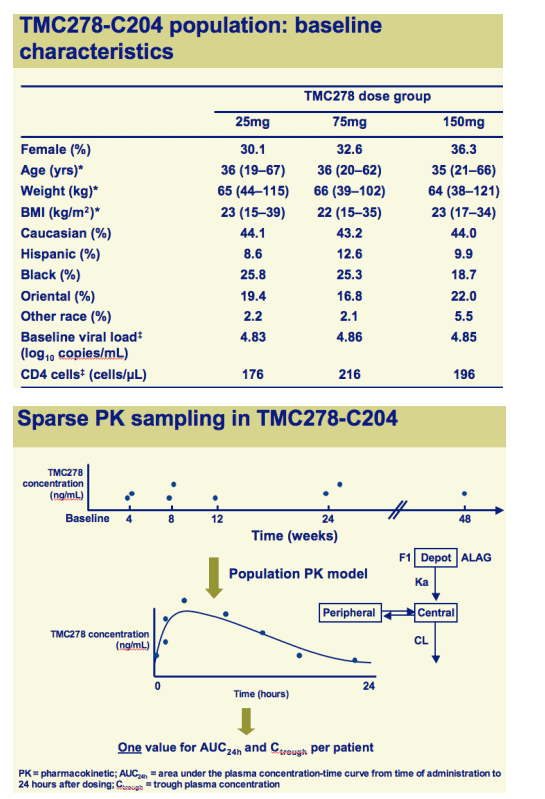
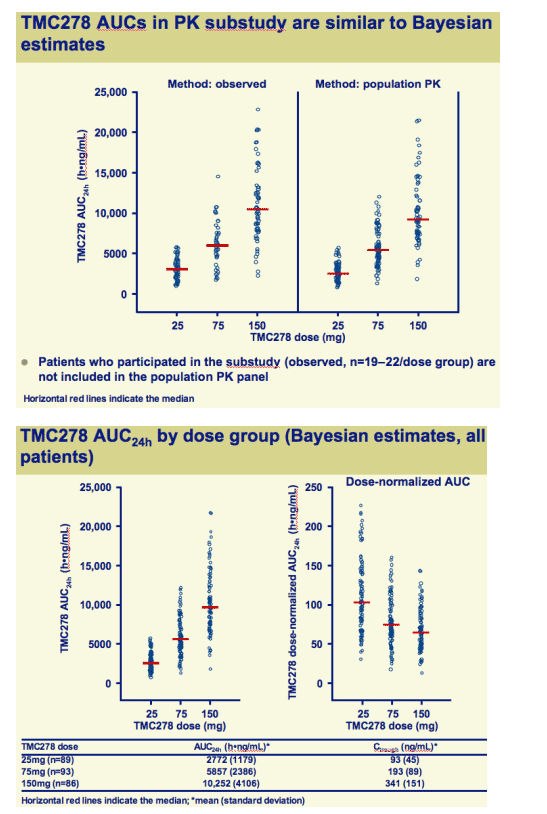
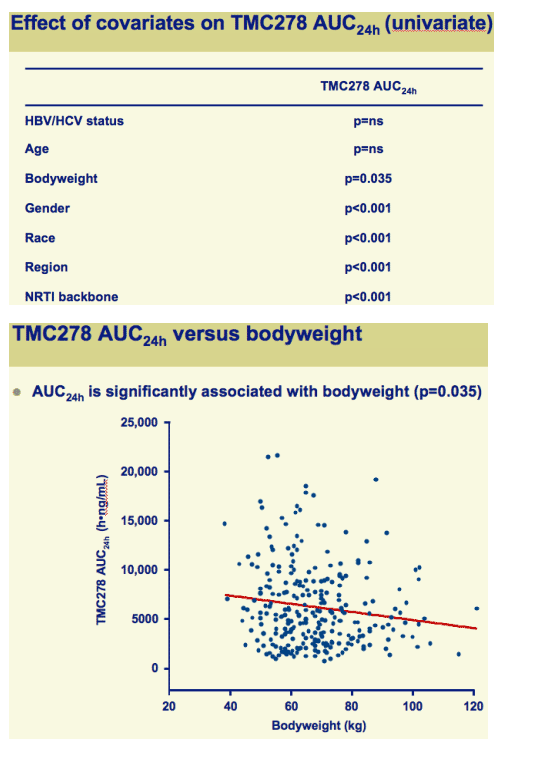
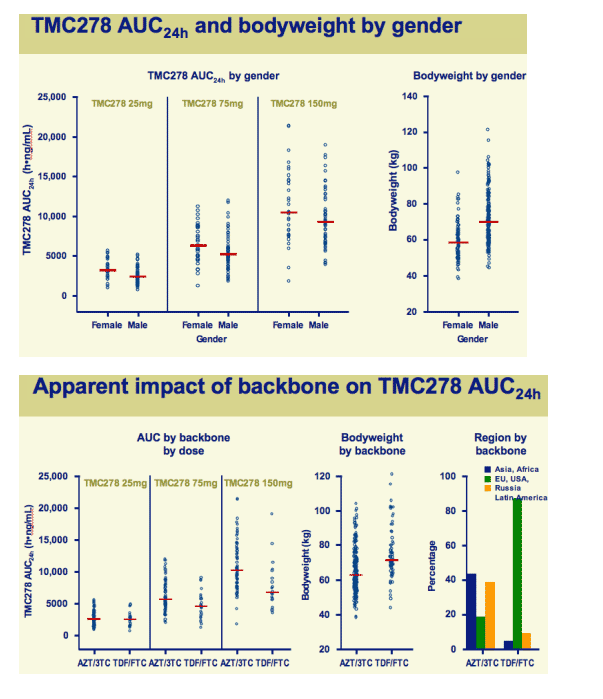
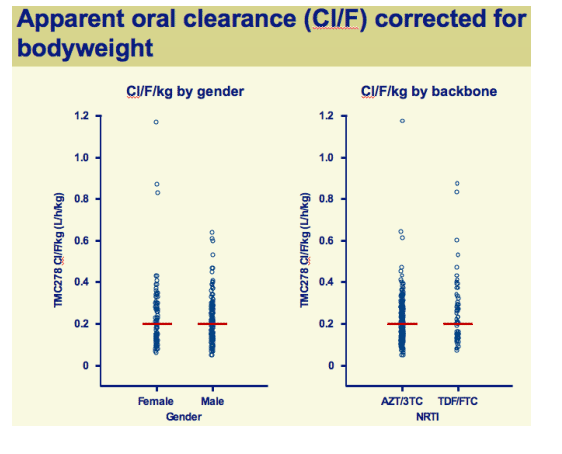
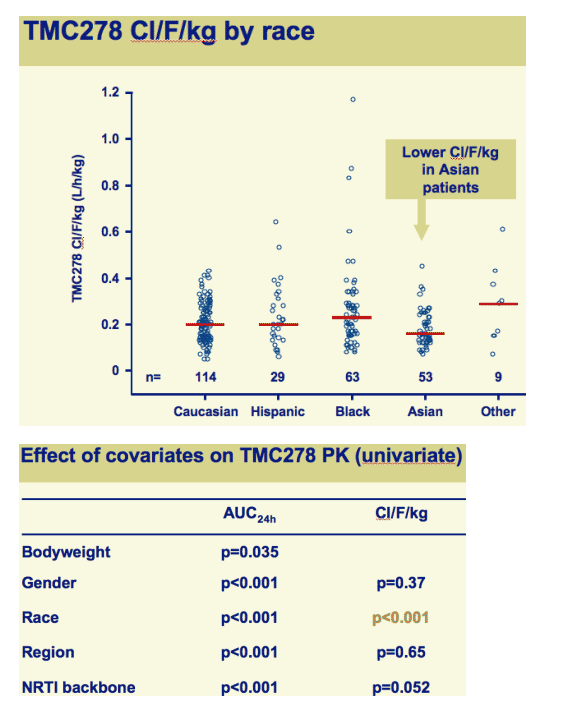
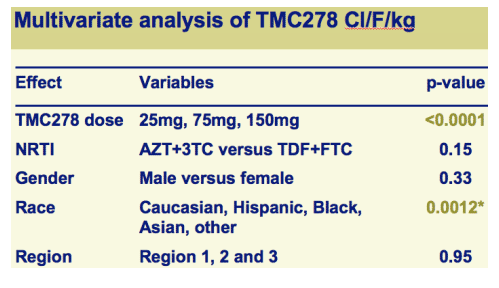
|
| |
|
 |
 |
|
|